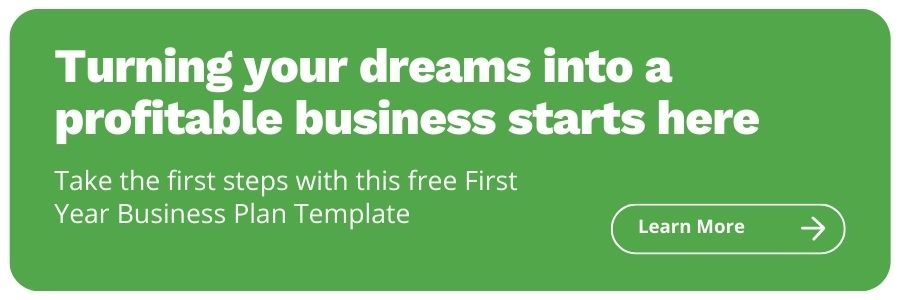Creating a Business Plan for Your Financial Planning Practice
Share this
Starting a business from scratch can be a scary and intimidating undertaking. Mary Beth Storjohann, founder of of Workable Wealth, says she was lucky she invested in a personal coach in early 2013 to help her through the launch process when she started her financial planning practice.
"What I learned during that time is something that we as advisors tell our clients time and time again," explains Storjohann. "It’s important to break big steps down into little steps! One of the most valuable things my coach encouraged me to do was to create a business plan."
Storjohann knew she needed to get that business plan on paper in order to organize her thoughts and fully understand what she wanted her financial planning practice to look like, stand for, and provide for her clients.
And she was generous enough to share her process and how she built out her plan with XY Planning Network. Using her walkthrough, and XYPN's free business plan template, you have everything you need to create your own business plan to start your firm.
Gather Your Resources
Storjohann's first step was to head to the U.S. Small Business Administration to review their resources for creating a plan. Then she went to chic-ceo.com ("as any badass, female entrepreneur should," she adds) and signed up for their 3-day Chic Start. This free course provides homework and guidance for getting your business plan started.
But you can gather separate resources as well, and there are a number of them out there. Start with the Business Plan Template that accompanies this blog post, which you can download for free here:
Then, check out the outline below, complete with Storjohann's commentary on how she created and used the template for her own successful firm.
Creating a Business Plan for Financial Advisors: The Step-by-Step Guide
Once you've downloaded and printed out your own template, you can scroll through the rest of this guide to help fill in the blanks.
Fill in Your Company Name, Tagline, and Mission Statement
Your mission statement should be written in present tense. It will list your overall goals and explain how your firm will get there. Consider answering these questions to help you write your statement:
-
What does the business do today?
-
Who do you do it for (i.e. what’s your niche)?
-
What’s the benefit to the end user (your clients)?
Detail Your Vision Statement Write this in the future tense; it describes how you see your business and lays out where you want the organization to be in the future. Here are some questions to help you draft a vision statement:
-
What do you want the business to do in the future?
-
When do you want to do it by?
-
How do you (as the business) expect to do it?
Describe Your Value Proposition
Your value proposition is the statement designed to show your potential clients that your services are going to be bigger, better, and more valuable that any of your competition. Make sure your value proposition is short and sweet and explains what sets you apart from the crowd.
If you need some examples, check out 10 Value Propositions You Wish You Had. Then consider answering how your product, service, and message will rock the socks off of your clients and customers!
Set Up an Organizational Chart
You simply need to answer, who is in your organization? For most independent RIAs, this is an easy one to complete because it's a matter of "me, myself, and I."
To create a more robust section you may find useful in the future, think about what you'd ideally like to hire for as your practice grows. You might want to hire a marketing consultant, a VA, a paraplanner, a web designer, or a bookkeeper (or all of the above!). List out potential contractors and a quick blurb about what tasks they would tackle as a member of your organization.
Estimate Your Start-Up Costs
Not sure where to start? Get XYPN's First Year Budget here.
Identify Your Competitive Advantage
What are your competitive advantages as a company?
For example, by having a virtual company, you have access to clients nationwide. Or by developing a social media platform, you may be able to tap into clients ignored by others in your industry. Maybe you have a client segment similar to personal demographic, which means you can relate better and develop stronger relationships with your clients.
To complete this section, you'll need to know what gives you an advantage -- but you'll also need to know who your competitors are to understand how you may be different. List out who your competitors are, then write out the competitive advantages you have over each.
Understand Your Barriers to Entry
These refer to things that could prevent you from doing business with potential clients. It could be the cost of planning for consumers, a lack of access to the market you want to serve, or the fact that similar services already exist
Ask yourself, what problems are you likely going to encounter? How will you solve them?
Know the Structure of Your Business and Think About Operations
Will you be an LLC, S-Corp or Sole Proprietorship?
Think about who will run your business, and how. Are you going to cover all the back-office responsibilities or are you going to solely focus on your clients? What equipment will you need to operate?
If you're not sure what you'll need on the operational side, consider this list of common, basic tools and technologies financial advisors need to run their own firm:
-
Laptop
-
Printer
-
Financial planning software
-
Client relationship management software (or CRM -- available through XYPN membership)
-
Secure e-file system
-
Accounting software
-
Account to accept subscription payments (offered by AdvicePay through XYPN membership)
Create Your Services and Pricing
Break down your offerings and create some content and context around them. You'll want to include information like:
-
Your service packages
-
Whether or not you'll offer hourly work
-
How you'll handle projects or AUM, if incorporating those offerings into your business
Consider Marketing Strategies and Sales Avenues
Think about speaking, writing, social media, video, networking events, guest posting, joining associations, your website and more. Craft a strategy that works for you and be detailed about the people or sites you’ll partner with or reach out to.
Here are some examples to get you going:
-
Website: What pages will it feature? How will it drive traffic? How will you provide value?
-
Blogging: Will you have a blog? How often will you post? What topics will you write or record videos about? How will you promote content? What images and graphics will you use based on audience?
Map Out Action Items and Timeline
This is your to-do list for launching. Feel free to do a “brain dump” of both big and small to-dos needed to get done before your start your firm -- then prioritize what you write out and get to work! Here are some to-dos you might include:
-
Look for and purchase domain name
-
Set up social media accounts across platforms your ideal clients are hanging out (think Facebook, Twitter, LinkedIn)
-
Handle business registration documentation
-
Establish your practice as a corporation or LLC (if you choose to do so)
-
Look for help from a compliance consultant for RIA set up (XYPN members receive initial and ongoing compliance support at no extra cost)
-
Research website design and logo providers, and gather information about pricing to compare your options
-
Start developing website content
A Few Reminders for Creating Your Business Plan
It’s not easy to just sit down and write this whole thing out in one go. Storjohann shares that her coach held her accountable to completing certain sections each week, which allowed her to thoughtfully research and craft one portion at a time under a lot less stress.
Differentiate yourself. Financial Planning for Gen X and Gen Y is becoming a growing market for industry professionals – which is fantastic! However, it’s reason more than ever to stand out and wave your own unique flag. Pick a niche that you relate to and create your own firm that best represents who you are and what you do.
Ready to Do Some Business Planning?
Want your own business plan template to fill out and help you launch your financial planning firm? Click here:
Then refer back to this post if necessary to help you work through some of the questions you need to ask yourself and the information you need to think about to completely fill in your plan.
Share this
- Running Your RIA Efficiently: Outsourcing Bookkeeping with XYPN Books
- Road to Launch with XYPN Member Alan Skillern, CFP®, MBA
- Coaching for Better Time Management: Prioritizing Organic Growth in Your Daily Routine
- Boost Your Financial Advisory Practice: SEO Strategies and CRM Optimization for Sales Success
- Advisor Blog (693)
- Financial Advisors (221)
- Growing an RIA (99)
- Digital Marketing (87)
- Marketing (84)
- Community (81)
- Start an RIA (76)
- Business Development (72)
- Coaching (72)
- Running an RIA (70)
- Compliance (69)
- Client Acquisition (65)
- Technology (64)
- XYPN LIVE (59)
- Entrepreneurship (57)
- Sales (49)
- Practice Management (44)
- Client Engagement (41)
- Bookkeeping (38)
- XYPN Books (38)
- Investment Management (37)
- Fee-only advisor (36)
- Lifestyle, Family, & Personal Finance (31)
- Employee Engagement (30)
- Client Services (25)
- Financial Education & Resources (25)
- Journey Makers (21)
- Market Trends (21)
- Process (14)
- Niche (11)
- SEO (9)
- Scaling an RIA (9)
- Career Change (8)
- Transitioning Your Business (7)
- Partnership (6)
- Transitioning To Fee-Only (4)
- Social Media (3)
- Transitioning Clients (3)
- Emerald (2)
- Persona (2)
- RIA (2)
- Onboarding (1)
- Sapphire (1)
Subscribe by email
You May Also Like
These Related Stories

Going Beyond Planning: Earning More with Speaking and Writing
Feb 4, 2016
4 min read

Raising Your Financial Planning Fees
Feb 5, 2018
6 min read





